
How to protect Mexican orange blossom in winter?
Our tips to keep your bush in a pot or in the ground
Contents
Popular for its pretty naturally rounded habit, its delicately scented white flowers and its ease of care. Choisya ternata generally reaches 1.5 to 2 metres at ripeness, sometimes 3 metres when never pruned or cut back. Between April and June, this bush reveals beautiful star-shaped flowers, white, giving off a scent reminiscent of orange blossom.
If you want a Mexican orange blossom in your garden or on your terrace, you should know that this bush offers average hardiness: this means it can withstand cold, provided temperatures do not fall below -10 or even -15°C. Beyond that, your Choisya is truly at risk… So if you live in a cool region, particularly north of the Loire, here are some practical tips to protect your bush from the harshest winter days.
→ Also discover our video on the Mexican orange blossom
Protecting a potted Mexican orange blossom
Mexican orange grows very well in a pot but like any bush grown in a container, it is more sensitive to frost.
When to bring pots in?
Bring it in from mid-October to mid-November depending on how severe winters are in your area.
Where and how to overwinter it?
- In regions where winter temperature does not fall below -5/-6°C, you can place it in a sheltered corner of the garden, near a well-exposed house wall, protected from cold winds. When first autumn frosts are forecast, wrap the pot in bubble wrap to protect the roots from frost, put an insulating layer under the pot (boards, bricks…) to isolate it from the soil then wrap the bush in horticultural fleece.
- Elsewhere, it must be brought in before frost and overwintered in a bright, unheated space, to be taken out in spring once last frosts have passed. During overwintering, do not neglect watering and allow potting mix to dry between two waterings.
Patricia’s tip: you can add a layer of mulch to pot surface so potting soil does not dry out too quickly.
Protecting Choisya ternata (Mexican orange) in open ground
Choose the right location
Before looking at advice on caring for Mexican orange, especially methods to protect it from cold, ask yourself the right questions when planting.
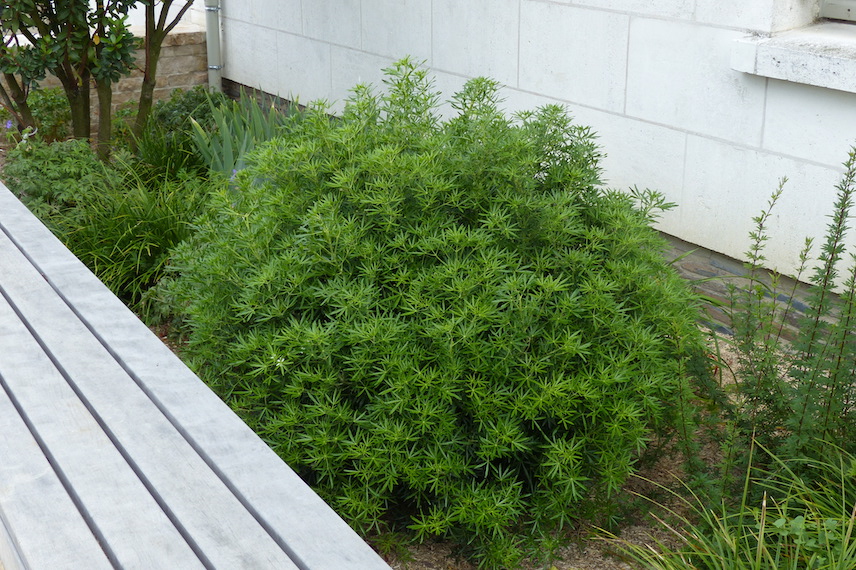
Mexican orange is more sensitive to cold during its early years: take extra care to protect it.
In the garden, find a spot as sunny as possible and sheltered from wind. In this respect, we recommend favouring south-facing positions. Mexican oranges also prefer light, well-drained soil enriched with a little compost. Keep all this crucial information in mind when planting, which remains a decisive moment for what follows!
Apply good mulch for winter
We recommend mulching to protect plant roots from frost, to retain moisture and to provide richer soil. To simplify, mulches we make ourselves reproduce conditions in which plant species thrive in natural medium. Indeed, wild plants do not often grow on “bare” ground like that of our vegetable patches, but rather on soil covered by leaves and all kinds of plant debris.
From spring, you can therefore add straw to protect and feed your Mexican orange, while also using compost when possible. Then, in autumn, remember to double this compost with an extra layer of straw or dried leaves to avoid exposing the bush to harmful chill. At minimum, aim for a thickness of 20 cm.
While mulching remains an essential step every winter, whatever the age of your Mexican orange, it is even more important during the first years after planting.
At this stage, the bush is more sensitive to cold and to drought. From establishment of young plants in spring, start mulching so they can root deeply and become more robust specimens.
For more on mulching, read our advice sheet: Mulching: why and how?
When to protect it?
In ground, Mexican orange adapts to almost any garden, provided soil is well drained in winter. Still protect it in case of severe frosts or heavy snowfall. Cover from November and remove protection once severe frosts have passed, around March/April.
How to protect it properly?
Installing a winter fleece then becomes indispensable. The winter fleece can cover all branches, but also the trunk. Make sure to fasten it securely with clips. In colder regions, opt for double- or triple-layer fleeces for enhanced protection.
There are more and more solutions to simplify gardeners’ lives and save time at wintering. For example, you can buy fully zipped covers that can be fitted in just a few simple moves.
Discover other Choisya - Mexican Orange Blossom
View all →Available in 0 sizes
Available in 4 sizes
Available in 0 sizes
Available in 2 sizes
Available in 4 sizes
Available in 3 sizes
Available in 2 sizes
Available in 1 sizes
Available in 1 sizes
Available in 2 sizes
What to do about snow and frost?
What you need to know
Even if you take all required precautions, your Mexican orange can be partially weakened by unforeseen frosts, especially when these occur early (early frosts in autumn) or exceptionally late (late frosts in spring).
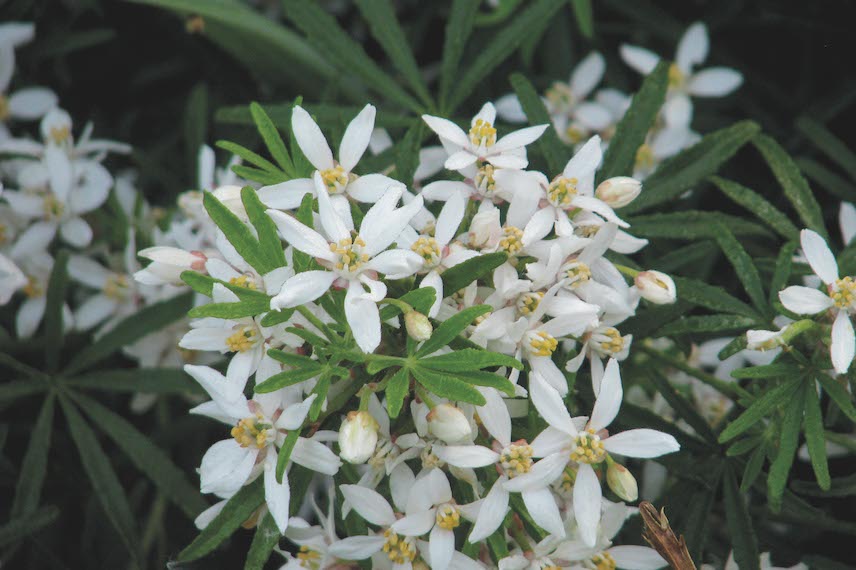
For example, if it snows where you are, leaves can be burnt by the cold. As quickly as possible, remove snow that covers the bush. If you notice burn damage, you can cut off browned branches and leaves to encourage regrowth.
Saving your Mexican orange from autumn frost and preparing it for winter
If your Mexican orange has suffered an early frost in autumn, it is not always possible to assess extent of damage and you will have to wait until following spring. But if you mulched well, it is very likely that roots were not affected by frost. First, we recommend reinforcing your mulch and properly fitting your frost-protection fleece or winter cover.
Then, when first mild, sunny spring days arrive, you will be able to uncover your bush. At its base, make sure to weed if necessary. Then, new shoots will indicate that roots were protected and that your bush still has a bright future.
To learn more
- Mexican Orange, Choisya: planting, pruning and maintenance
- To grow Mexican Orange in a pot
- Pruning Mexican Orange
- 7 Ideas for Pairing Mexican Orange
- Subscribe!
- Contents
































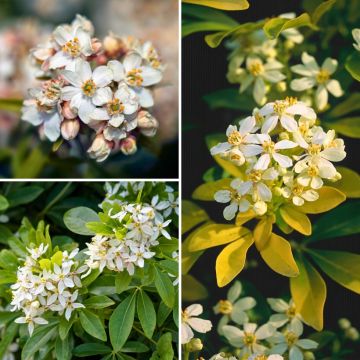
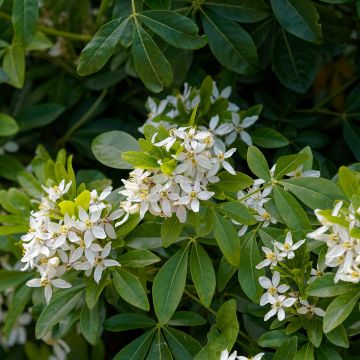
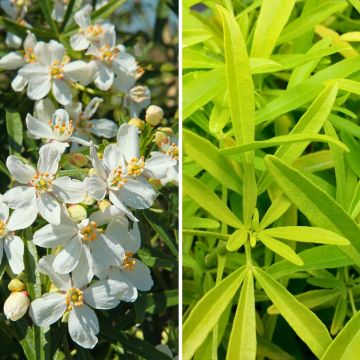
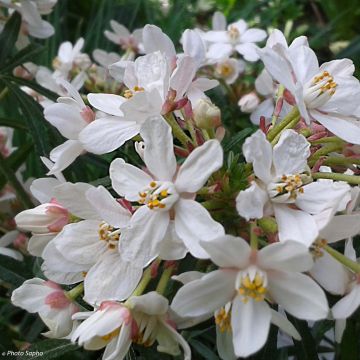
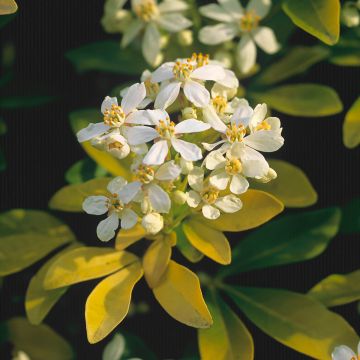
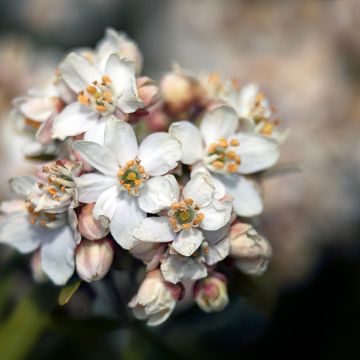
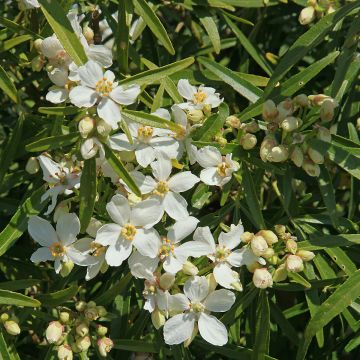

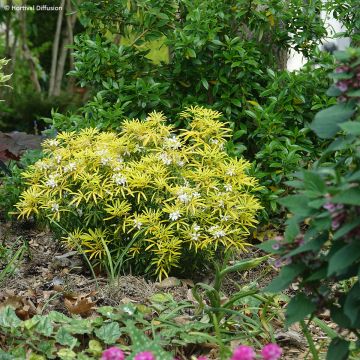

Comments